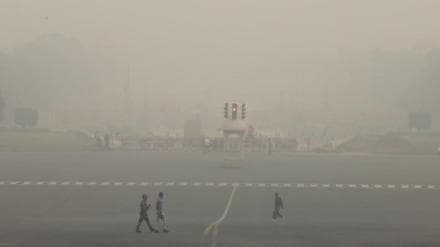An annual survey on air pollution has presented, yet again, a bleak picture for India. Delhi retained its dubious spot as the world’s most polluted capital in 2024 although India bettered its position from the third to fifth most polluted country, Swiss air quality technology firm IQAir found.
Last year’s gains are measly, and eradicating pollution remains a Himalayan task. For instance, the country witnessed 7% decline in concentrations of fine particulate matter, or PM2.5; yet 13 of the 20 most polluted cities including the one with the worst air are in India. More than a third (35%) of Indian cities recorded annual PM2.5 levels that were 10 times worse than the recommended safe limit of 5 micrograms per cubic metre.
Cities adjoining Delhi are among the worst performers, the data shows. In a broader context, Bangladesh and Pakistan suffer a similar fate as India to make South Asia one of the worst regions. Within India, there is a North-South divide. Factors like burning biomass besides coal, and vehicular emissions —the major source of air pollution in Delhi —are common across India. In North India, an added contributor like stubble burning (also practised in neighbouring Pakistan) has been politicised in recent years.
The region’s geography also conspires against it. Pollutants emanating in the Indo-Gangetic Plain get mixed with those blowing in from the coast and get trapped as the Himalayas act as a natural barrier.Clearly, air pollution can spread across cities, states, and even countries. Sadly, political expediencies often take over as parties blame each other instead of working in unison.
The Aam Aadmi Party, while it was in power in Delhi, and the Bharatiya Janata Party have traded accusations for the crisis in the capital. Officials in India and Pakistan too have attributed spikes in pollution to conditions across the border. It therefore warrants regional cooperation and an airshed approach to tackling the menace.
The World Bank has supported the government by considering all sources of emissions that fall within the airshed, which it defines as “a region that shares a common flow of air, which may become uniformly polluted”. Steps like curbing biomass burning by promoting liquefied natural gas cylinders should be enforced in rural areas. Air pollution is a health hazard in India, with a Lancet study stating that 1.5 million deaths annually from 2009 to 2019 resulted from long-term exposure to PM2.5.
The National Clean Air Programme (NCAP), launched in 2019, reported that 95 out of the 131 cities under it had shown improvement. But the bulk of its funds have been spent on reducing road dust, a major part of PM10 which the NCAP evaluation focuses on.
Prioritising PM2.5 instead will encourage cities to spend further on limiting more harmful emissions. Delhi is a test case for India. An analysis by the Centre for Science and Environment showed that the city’s PM2.5 levels in 2024 were more than twice the national ambient air quality standard, despite a dip in farm fires in Haryana and Punjab.
The AAP government pushed electric vehicle adoption, but it failed to deliver on its promise of reducing pollution by a third, an ask compounded by its stand-offs with an obstructive Centre. Now that both governments are under the BJP, which has promised to halve Delhi’s pollution in the next five years, there can be no excuses for not delivering on it.
